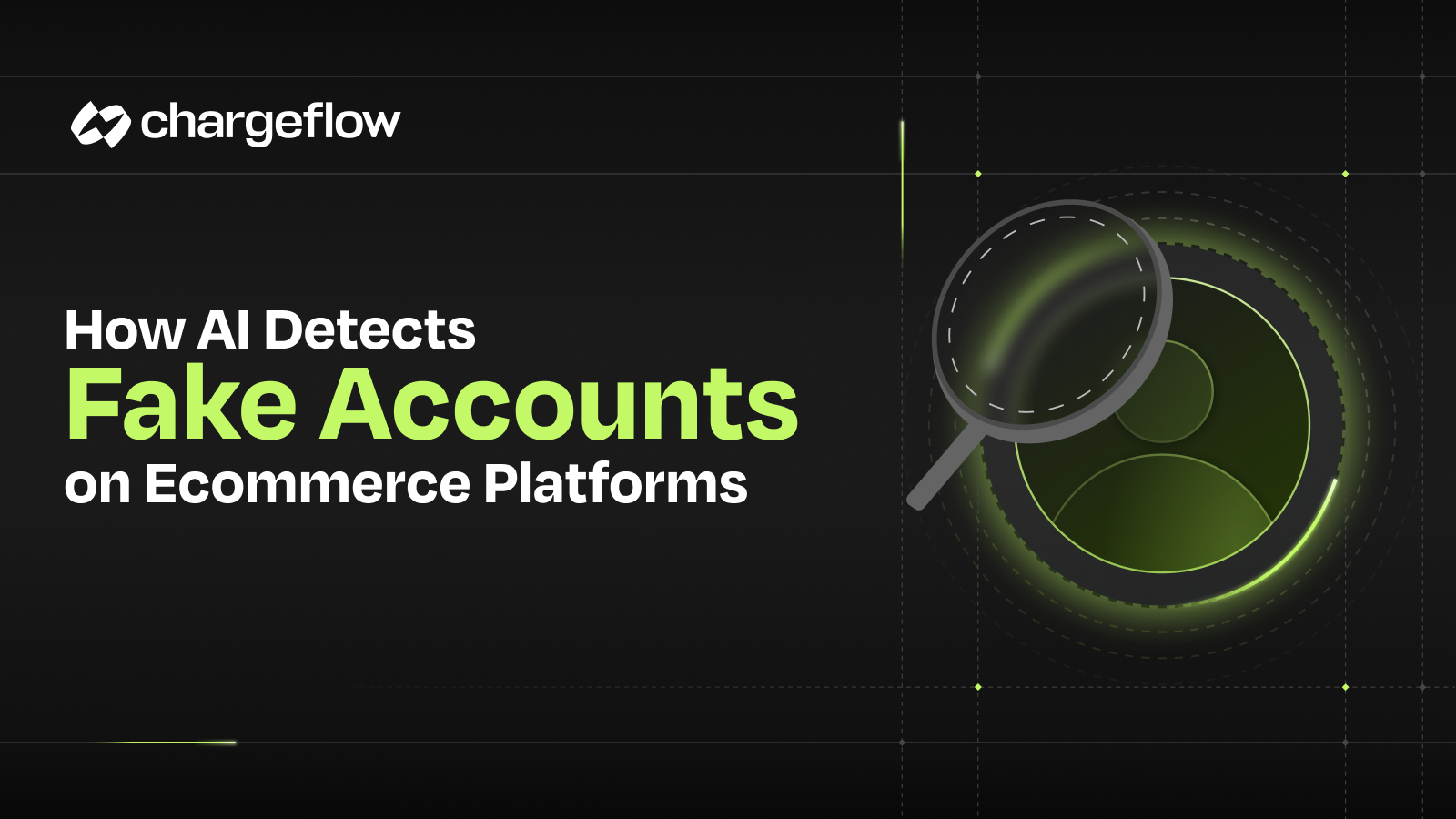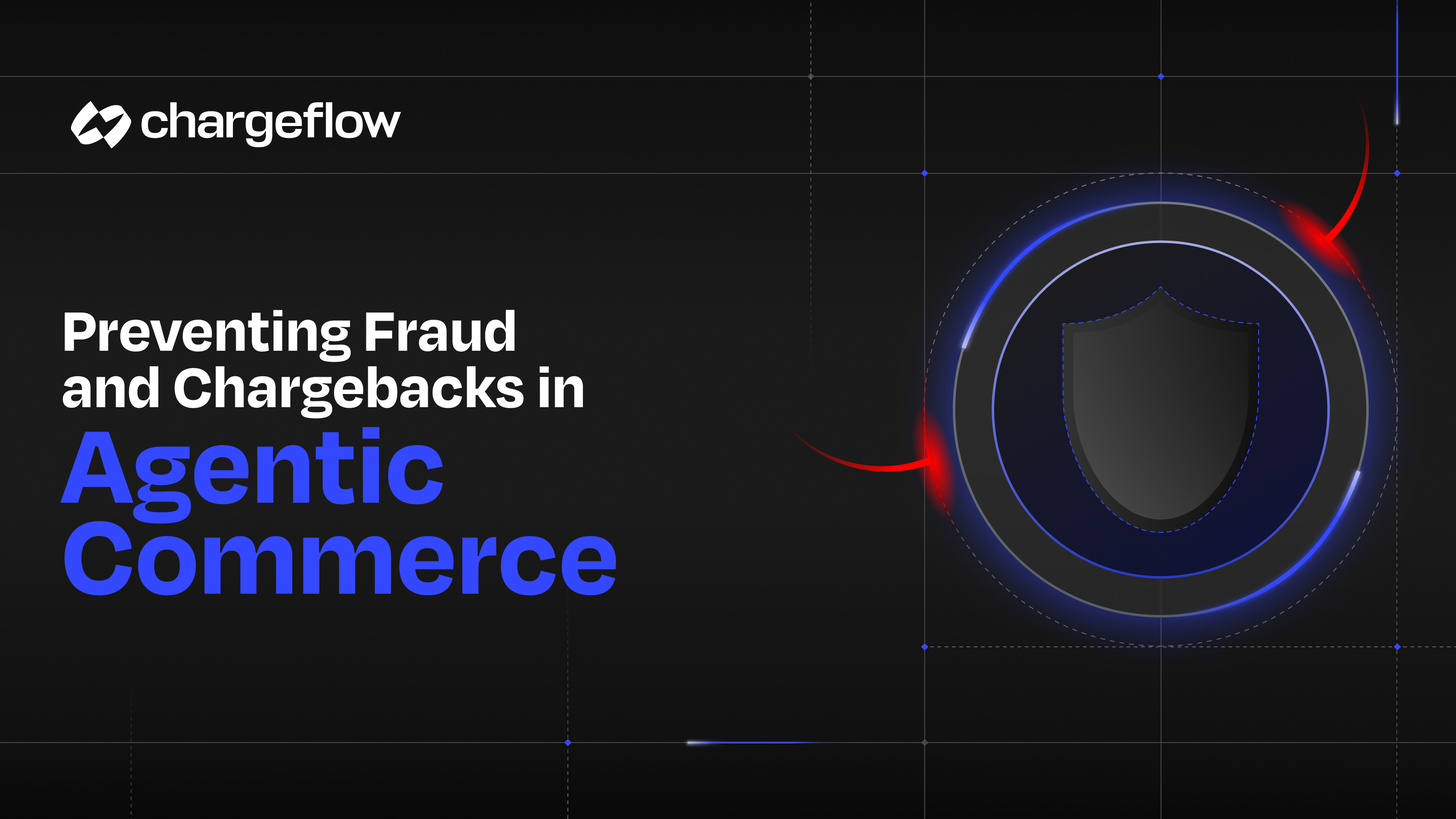How to Reduce Chargebacks on Your Store in 2023?

Chargebacks?
No longer your problem.
Recover 4x more chargebacks and prevent up to 90% of incoming ones, powered by AI and a global network of 15,000 merchants.
Boost your profits and protect your business! Learn the ultimate strategies to slash chargebacks and increase customer satisfaction in 2023.
In the fast-paced world of e-commerce, running a successful online store requires careful attention to various aspects, one of which is chargeback management. As an online merchant, understanding how to reduce chargebacks in 2023 is crucial for maintaining a healthy business and protecting your bottom line.
The implications of chargebacks extend beyond the direct financial loss they cause. Excessive chargebacks can lead to increased processing fees, penalties, and even the termination of your merchant account. Additionally, a high chargeback ratio can damage your store's credibility and trustworthiness among consumers.
In this comprehensive guide, we will delve into the world of chargebacks, exploring their causes, costs, and consequences. We will equip you with valuable strategies and best practices to effectively reduce chargebacks and safeguard your online store. By implementing these techniques, you can minimize the risk of financial losses, maintain healthy customer relationships, and establish a solid foundation for sustainable growth in the e-commerce landscape.
Join us as we embark on a journey to empower you with the knowledge and tools necessary to tackle chargebacks head-on. From understanding the chargeback process to implementing fraud prevention measures, optimizing the checkout experience, and collaborating with payment processors, we'll cover it all. Get ready to transform your chargeback management approach and set your online store up for success in 2023 and beyond.
Analyzing the Root Causes of Chargebacks
Chargebacks can be detrimental to any business, resulting in financial losses, damage to reputation, and increased administrative burden. To effectively reduce chargebacks on your store, it is crucial to identify and address the root causes that lead to these disputes.
By understanding the underlying reasons behind chargebacks, you can implement targeted strategies to mitigate their occurrence. In this section, we will delve into the key factors that contribute to chargebacks and explore potential solutions.
1. Weak Payment Security Measures
One of the primary causes of chargebacks is inadequate payment security measures. When customers perceive a lack of security during the transaction process, they may dispute the charge out of fear of unauthorized access to their financial information. To address this issue:
a. Implement robust fraud prevention tools: Utilize advanced fraud detection systems and tools such as address verification systems (AVS), CVV verification, and IP geolocation to ensure the legitimacy of transactions.
b. Utilize secure payment gateways: Integrate a reputable payment gateway that employs encryption and tokenization technologies to protect sensitive customer data.
c. Comply with industry standards: Adhere to the Payment Card Industry Data Security Standard (PCI DSS) requirements to maintain a secure payment environment.
2. Poor Customer Experience
Unsatisfactory customer experiences can also lead to chargebacks. Customers may dispute charges if they encounter difficulties during the purchasing process, such as unclear product descriptions, complicated checkout procedures, or inadequate customer support. To enhance customer experience and minimize chargebacks:
a. Provide clear product descriptions: Ensure that your product descriptions are accurate, comprehensive, and transparent about features, specifications, and potential limitations.
b. Streamline the checkout process: Simplify the steps and form fields required for checkout, allowing customers to complete their purchases quickly and efficiently.
c. Offer multiple support channels: Implement responsive customer support channels, such as live chat, email, and phone, to address customer inquiries and concerns promptly.
d. Facilitate returns and refunds: Establish a hassle-free return and refund policy, clearly communicating the process and timelines to customers.
3. Inadequate Communication and Documentation
Lack of effective communication and proper documentation can contribute to chargebacks. Customers may dispute charges if they did not receive expected communication regarding order confirmation, shipping updates, or refund status. To mitigate these issues:
a. Implement order confirmation notifications: Send automated order confirmation emails to customers immediately after a purchase to acknowledge their transaction and provide relevant details.
b. Provide shipping notifications: Keep customers informed about the status of their orders by sending shipping notifications and tracking information.
c. Maintain comprehensive records: Document all customer interactions, including emails, chats, and phone conversations, to resolve disputes efficiently and provide evidence if necessary.
4. Fraud Prevention and Detection
Fraudulent transactions are a significant cause of chargebacks. When customers become victims of fraud, they may initiate chargebacks to recover their funds. To combat fraud effectively:
a. Utilize fraud detection tools: Implement advanced fraud detection systems that employ machine learning algorithms and pattern recognition to identify and prevent fraudulent activities.
b. Monitor suspicious transactions: Regularly review transactions for red flags, such as unusually large orders, multiple shipping addresses, or mismatched billing information.
c. Verify customer identities: Incorporate identity verification measures, such as two-factor authentication or device fingerprinting, to ensure the authenticity of customers.
By addressing these root causes of chargebacks, you can significantly reduce their occurrence and create a more secure and positive shopping experience for your customers. Remember, implementing a holistic approach that combines robust security measures, exceptional customer experience, effective communication, and fraud prevention will help you build trust and loyalty while minimizing chargebacks.
2023 Best Practices for Reducing Chargebacks
1. Monitoring and Managing Chargebacks
Chargebacks can have a significant impact on businesses, both financially and operationally. It is crucial for merchants to have effective monitoring and management systems in place to minimize the occurrence and mitigate the effects of chargebacks. In this section, we will explore key strategies for monitoring and managing chargebacks to ensure a smooth and profitable operation.
Tracking Chargeback Metrics
To effectively manage chargebacks, it is essential to have a clear understanding of the metrics associated with them. By monitoring these metrics, you can identify patterns, detect areas of concern, and take appropriate actions. Here are two important chargeback metrics to track:
1. Chargeback Ratio: The chargeback ratio is the percentage of chargebacks in relation to the total number of transactions. By monitoring this ratio, you can assess the overall health of your business and identify any potential issues that may be leading to chargebacks.
2. Reason Codes: Reason codes provide insights into the specific reasons behind chargebacks. Each chargeback carries a reason code that categorizes the cause of the dispute, such as fraud, customer dissatisfaction, or processing errors. By analyzing reason codes, you can identify recurring issues and tailor your prevention strategies accordingly.
Chargeback Alerts and Notifications
Timely detection of chargebacks is crucial to initiating the necessary actions for resolution. Implementing a robust chargeback alert and notification system allows you to proactively address chargebacks. Here's how you can set up effective alerts and notifications:
1. Automated Notifications: Configure your system to send real-time notifications whenever a chargeback is initiated. This ensures that you are promptly informed and can begin the necessary investigation and response process.
2. Threshold Monitoring: Set up thresholds for chargeback ratios and transaction volumes. When these thresholds are exceeded, you receive an alert, allowing you to take immediate action and prevent further chargebacks.
Chargeback Representment
Chargeback representment refers to the process of disputing and challenging chargebacks with compelling evidence to win the case and recover the funds. Implementing effective chargeback representment strategies can significantly improve your chances of successful dispute resolution. Consider the following steps when engaging in chargeback representment:
1. Gathering Evidence and Documentation: Collect all relevant transaction information, customer communications, delivery confirmations, and any other supporting documents. This evidence will strengthen your case and increase the likelihood of a successful representment.
2. Analyzing Reason Codes: Thoroughly review the reason code associated with the chargeback. Understand the specific requirements for each reason code and tailor your representment response accordingly. Address the specific concerns raised by the customer or the payment network to strengthen your argument.
3. Effective Representment Letter: Craft a clear and concise representment letter that presents your case persuasively. Highlight relevant facts, dispute the customer's claims, and provide any supporting evidence to prove your innocence or the legitimacy of the transaction.
4. Collaborating with Payment Processors and Issuing Banks: Maintain open communication channels with your payment processors and issuing banks. They can provide valuable guidance and assistance throughout the representment process. Work closely with them to ensure that you have the necessary support and resources to mount a successful defense.
Chargeback Management Tools and Services
Utilizing chargeback management tools and services can streamline the monitoring and management process, saving you time and effort. Consider implementing the following tools and services to enhance your chargeback management:
1. Chargeback Prevention Software: Invest in specialized software that can help you identify potential chargeback triggers and take proactive measures to prevent them. These tools analyze transaction data, detect patterns, and provide insights to optimize your prevention strategies.
2. Chargeback Analytics and Reporting: Leverage analytics and reporting tools to gain deeper insights into your chargeback data. These tools can help you identify trends, track the effectiveness of your
2. Collaborating with Payment Processors and Issuing Banks
In the world of e-commerce, collaborating with payment processors and issuing banks is crucial for reducing chargebacks and maintaining a healthy business environment. These financial partners play a significant role in managing transactions, ensuring secure payments, and resolving chargeback disputes.
By establishing strong relationships with payment processors and issuing banks, you can effectively minimize chargebacks and protect your business from financial losses. Here's how you can collaborate with them to achieve these goals:
1. Partnering with Reliable Payment Service Providers
- Research and choose a reputable payment service provider (PSP) that aligns with your business needs and industry requirements.
- Evaluate their track record, customer reviews, and the range of services they offer, such as fraud detection tools, chargeback management solutions, and real-time reporting.
- Ensure the PSP supports the payment methods preferred by your target audience, including credit cards, digital wallets, and alternative payment options.
2. Establishing Open Communication Channels
- Maintain regular communication with your payment processor to stay updated on industry trends, security measures, and any changes in chargeback regulations.
- Seek their guidance in implementing effective chargeback prevention strategies, including fraud detection mechanisms, transaction monitoring, and risk management protocols.
- Collaborate with your payment processor to develop customized solutions tailored to your business model and customer base.
3. Negotiating Reasonable Chargeback Resolution Terms
- Establish clear and fair chargeback resolution terms with your payment processor, ensuring a mutually beneficial agreement.
- Understand the specific timelines and documentation requirements for responding to chargeback disputes, as set by your payment processor and card networks.
- Work closely with your payment processor to provide compelling evidence and documentation to support your case during chargeback representment.
4. Leveraging Payment Processor Tools and Analytics
- Utilize the tools and analytics provided by your payment processor to gain insights into transaction patterns, fraud indicators, and chargeback trends.
- Monitor chargeback ratios, reason codes, and dispute outcomes to identify potential areas for improvement and implement proactive measures.
- Leverage real-time reporting and analytics to identify suspicious transactions, detect fraud attempts, and take necessary action promptly.
5. Staying Abreast of Industry Regulations
- Keep yourself updated with the evolving regulations and compliance standards set by card networks and financial institutions.
- Adhere to the Payment Card Industry Data Security Standard (PCI DSS) to ensure the security of cardholder data and minimize the risk of data breaches.
- Maintain transparency and compliance in your financial operations to build trust with payment processors, issuing banks, and customers.
3. Educating and Training Staff
In order to effectively reduce chargebacks on your store, it is crucial to invest in educating and training your staff. By equipping them with the necessary knowledge and skills, they can play a proactive role in preventing chargebacks and handling them appropriately when they do occur. This section will outline key strategies for educating and training your staff to effectively tackle chargeback issues.
1. Comprehensive Training on Chargeback Prevention
a. Importance of Chargeback Prevention: Start by emphasizing the significance of chargeback prevention and its impact on the business's financial health and reputation.
b. Understanding Chargeback Reasons: Educate your staff about the common reasons behind chargebacks, such as fraudulent transactions, unauthorized transactions, and customer dissatisfaction.
c. Recognizing Warning Signs: Teach your staff how to identify warning signs that may indicate potential chargeback situations, such as suspicious customer behavior or mismatched billing and shipping addresses.
d. Transaction Verification: Train your staff on the importance of verifying customer identities and ensuring the accuracy of transaction information before processing orders.
e. Clear Policies and Procedures: Provide detailed information about your store's policies and procedures related to chargebacks, including steps to be taken in case of a chargeback request.
2. Enhancing Staff Knowledge on Fraud Detection
a. Recognizing Fraudulent Activities: Teach your staff how to identify signs of fraudulent activities, such as multiple orders from the same IP address, unusually large orders, or rush delivery requests.
b. Verifying Suspicious Orders: Train your staff on how to conduct additional checks and verification for suspicious orders, such as contacting customers for additional information or requesting further proof of identity.
c. Collaboration with Fraud Prevention Tools: Introduce your staff to fraud prevention tools and software that can help detect and prevent fraudulent transactions, such as address verification services and card verification codes.
d. Staying Updated on New Fraud Techniques: Emphasize the importance of continuous learning and staying informed about emerging fraud techniques in the e-commerce industry.
3. Regular Updates and Workshops
a. Chargeback Prevention Updates: Keep your staff updated on the latest trends, regulations, and best practices in chargeback prevention through regular training sessions, workshops, or informative newsletters.
b. Case Studies and Examples: Share real-life case studies and examples of successful chargeback prevention and management to enhance understanding and provide practical insights.
c. Role-Playing Exercises: Conduct role-playing exercises where staff members can simulate chargeback scenarios and practice appropriate responses, dispute handling, and customer communication.
d. Continuous Feedback and Evaluation: Establish a feedback loop to assess the effectiveness of the training programs and identify areas that require improvement or additional focus.
Significantly Reduce Chargebacks with Chargeflow
As a business owner, chargebacks can be a major source of frustration and financial loss. When customers dispute transactions, it not only leads to revenue reversals but also additional fees and potential damage to your reputation. However, with Chargeflow, you can significantly reduce chargebacks and protect your business. Here's how Chargeflow can help:
1. Advanced Fraud Detection: Chargeflow employs cutting-edge technology to detect and prevent fraudulent transactions. By analyzing multiple data points, including customer behavior, purchase history, and device information, Chargeflow can identify suspicious activity and flag potential fraudulent transactions before they result in chargebacks. By catching fraudsters early on, you can minimize the impact on your business and reduce chargebacks.
2. Real-time Transaction Monitoring: With Chargeflow's real-time transaction monitoring, you can stay informed about every transaction as it happens. This allows you to promptly identify any signs of potential chargebacks and take immediate action. By staying vigilant and proactive, you can address customer concerns, rectify issues, and prevent chargebacks from occurring in the first place.
3. Dispute Resolution Assistance: In the event that a chargeback does occur, Chargeflow provides valuable dispute resolution assistance. It guides you through the process, helping you gather the necessary evidence and prepare a compelling response. Chargeflow understands the complexities of chargeback disputes and can provide expert advice to increase your chances of winning the case and recovering your funds.
4. Chargeback Analytics and Insights: Chargeflow offers in-depth analytics and reporting on chargeback trends, giving you valuable insights into the reasons behind them. By understanding the root causes, you can identify areas for improvement in your business processes, customer service, or product offerings. This proactive approach can help you address underlying issues and reduce the likelihood of future chargebacks.
5. Integration and Compatibility: Chargeflow seamlessly integrates with various payment gateways and e-commerce platforms, making it easy to implement within your existing system. Whether you operate an online store or a brick-and-mortar business, Chargeflow can adapt to your needs. Its compatibility ensures smooth operations without disrupting your existing workflow.
By utilizing Chargeflow's comprehensive chargeback prevention and management features, you can significantly reduce the occurrence of chargebacks and protect your bottom line. Not only does this result in cost savings, but it also helps maintain a positive relationship with your customers, fostering trust and loyalty.
Don't let chargebacks hinder your business's growth and profitability. Take control of your chargeback management with Chargeflow and experience the peace of mind that comes with effective chargeback prevention. Invest in Chargeflow today and focus on what you do best—growing your business while leaving chargeback worries behind.

Chargebacks?
No longer your problem.
Recover 4x more chargebacks and prevent up to 90% of incoming ones, powered by AI and a global network of 15,000 merchants.






























.png)








